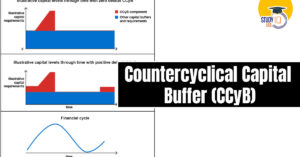Table of Contents
The Chief Justice of India discusses the concept of federalism as a fundamental aspect of the Indian Constitution, emphasising its historical context, current implications, and future challenges.
Federalism in India
- The Cambridge Dictionary defines federalism as a political system where separate states are organised under a central government.
- Indian federalism reflects a deliberate political division of powers designed by the framers to ensure both “self-rule” and “shared rule” across the Union and states.
- The framers used a “Union” over a federation as the choice was influenced by the historical context of Partition and concerns over secessionist movements.
Constitutional Framework
- Legislative Competence: The Indian Constitution delineates legislative powers through 3 lists in the 7th Schedule:
- Union List: Subjects exclusively under Central jurisdiction.
- State List: Subjects exclusively under State jurisdiction.
- Concurrent List: Subjects shared between Centre and states.
The Nature of Indian Federalism
- Basic Features Doctrine: The Kesavananda Bharati judgment established federalism as a basic feature of the Constitution.
- Centralising vs. Decentralising Tendencies: Critics argue that the Indian Constitution exhibits a centralising tendency.
- But it also incorporates mechanisms to balance state autonomy.
- Centralising Tendencies: India’s Constitution is viewed as more unitary due to:
- Emergency Powers of the Union.
- Residuary Powers reserved for the Union Parliament.
- Constitutional Checks: To balance this centralization:
- Amending constitutional provisions impacting states is procedurally stringent.
- Governors, while holding the power to assent to state bills, are constitutionally bound to avoid subordinating states to the Union.
|
Cooperative and Asymmetric Federalism |
|
Judicial Interpretations: Centripetal and Centrifugal Eras
- Centripetal Era (Pre-1994): Before the S.R. Bommai case, the Supreme Court’s interpretations often consolidated power with the Centre.
- Centrifugal Era (Post-Bommai): The Bommai case marked a shift toward protecting states’ autonomy, affirming that states are not merely subordinate to the Centre.
- Example of Federal Governance: Article 200:
- Article 200 allows the Governor three options on state bills — assent, withhold, or reserve for the President.
- The court recently ruled that indefinite withholding is not a viable option, as it undermines federalism and representative governance.
- Instead, withholding assent can only be used to prompt reconsideration by the state legislature.
- Example of Federal Governance: Article 200:
Future Prospects
- Transformative Federalism: Today, issues like climate change, AI, data privacy, and cybercrimes transcend state boundaries, challenging traditional legislative demarcations.
- Transformative Potential: The Constitution is viewed as a transformative document that must adapt to modern challenges while upholding democratic ideals like equality, liberty, dignity, and fraternity.
- Both Union and states must uphold constitutional values and collaborate to solve contemporary issues.


 5 Years of SVAMITVA Scheme and Its Benef...
5 Years of SVAMITVA Scheme and Its Benef...
 Places in News for UPSC 2025 for Prelims...
Places in News for UPSC 2025 for Prelims...
 Countercyclical Capital Buffer (CCyB): P...
Countercyclical Capital Buffer (CCyB): P...





















